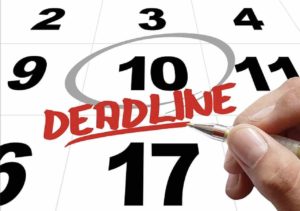A 401(k) or 403(b) plan is a powerful retirement savings vehicle for employees as well as an important employee benefit that serves as a recruitment and retention tool for employers. When employees are engaged and participating in their organization retirement plan, it’s a win‐win scenario — and a compelling reason for employers/plan sponsors to focus on plan participation. Moreover, research shows that when employees are on track financially, they have greater job satisfaction and loyalty to their organization. Here are a few ways you can improve your plan and increase participation.
• Enhance plan design. Tailor a plan to meet the organization’s goals, taking into account other retirement plans, if any, demographics and employee investment sophistication. Engage a seasoned pension consultant to help you accomplish this.
• Implement less strict plan eligibility. Shorten or eliminate the eligibility requirements for new employees to enter the plan. You are more likely to get a new hire to enroll during your orientation meetings when you have their full attention and can explain the benefits to them in a small group than you are six months or one year later.
• Offer matching contributions. If budget allows, provide matching contributions. The idea of “free” money has a strong appeal, even if it’s only a dime on the dollar. The larger the match, the bigger the impact on enrollment.
• Allow withdrawal flexibility. Provide loans and hardship withdrawal options. Many employees don’t want to put money into a plan that they can’t get to in an emergency.
• Furnish good plan information. Provide plethora of good plan material. Regularly tell your employees about the plan and its benefits to them.
• Don’t overload employees with information. It is the employer/plan sponsor’s fiduciary duty to educate its plan participants about their options. Information should be delivered in modest-sized, more frequent communications in order to avoid information overload. Offering exhaustive seminars or extensive literature on your employees may overwhelm them, and in turn, may decrease plan participation rates. Instead of providing all the information upfront, only deliver the relevant materials as an employee moves through the enrollment process.
• Provide sufficient investment fund choices. Ensure that a broad range of investment options are available. The average plan today has about 11. Typically, a good plan will provide from 10 to 15 options that are well balanced between index funds and managed funds. But remember that more options can create confusion and complexity.
• Educate your employees. Provide an investment advice service or, even better, offer one-on-one meetings to participants by a qualified financial advisor. This will help employees ensure that they will meet their retirement goals. Hold 401(k) or 403(b) meetings regularly. These are great opportunities to communicate plan benefits and features. Remember, you need to sell the plan and the more opportunities you give your employees to enroll the more likely they are to join.
• Some additional features to consider. First, consider automatic enrollment. Plans see significant increases in employee participation when automatic enrollment is implemented. Second, allow Roth contributions. More and more plan sponsors are allowing Roth after-tax feature into their plans. Why? Because younger employees are asking for it.
• Ask for feedback. Ask employees for feedback regarding their enrollment experience and find out what kind of services or educational materials they would like to see.
We hope you found these tips, tricks and strategies helpful. If you are ready to consider ways to enhance participation in the retirement plan you offer to employees, NESA Plan Consultants can help. Getting help with these aspects of retirement plan oversight will improve on communication, education, and delivering a more personalized experience for your most valuable asset: your employees.
This is for educational purposes only. The information provided here is intended to help you understand the general issue and does not constitute any tax, investment or legal advice. Consult your financial, tax or legal advisor regarding your own unique situation and your company’s benefits representative for rules specific to your plan.

About the Author
A 15-year veteran in all aspects of workplace retirement plan benefits program, Mizan J. Rahman is on a mission to help hard-working Americans enjoy a meaningful financial future. He specializes in the compliance, administration, design, and legal documentation of 401(k), 403(b), and 457(b) plans. Mizan provides high-level, personalized consulting to small businesses and not-for-profit organizations. One of the select few to have been awarded Enrolled Retirement Plan Agent (“ERPA”) by the Internal Revenue Service, Mizan regularly represents clients in front of DOL and IRS during audits.
Ready to Work with NESA? Or Have a Question?




